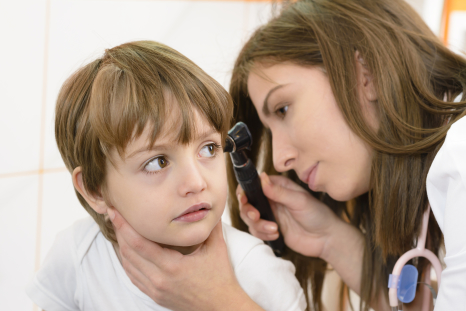
Reuters Health reports on a research review which revealed that leaving childhood partial deafness untreated has long term consequences. According to the recent review, it’s just as important to identify and treat newborns and young children with hearing loss in only one ear, or else prospects for hearing recovery may be diminished.
As explained in a June 8, 2015 online article that appeared in Pediatrics, a review of several hearing loss studies found that single-sided deafness that is left untreated leads to reorganization of developing hearing pathways in the brain, and has been tied to poorer language development and educational outcomes.
“Traditionally, asymmetric deafness in childhood, particularly when only one ear is affected, has been overlooked or dismissed as a concern because the children have had some access to sound,” said lead author Karen Gordon, PhD, of Archie’s Cochlear Implant Laboratory at The Hospital for Sick Children in Toronto, Canada. “The problem is that children with asymmetric hearing still have a hearing loss. Without normal hearing from both ears, they experience deficits locating sounds around them.”
According to Gordon, a child with a hearing loss in one ear may have difficulty hearing what her mother is saying when there are other noises in the room or other people speaking at the same time. Yet parents can be reluctant to treat asymmetrical deafness in young children. As reported to Reuters Health writer Kathryn Doyle, some experts in the hearing research field believe that parents may be unaware of the importance of treating hearing loss that occurs in only one ear.
“One of the main issues is lack of information,” said Dayse Tavora-Vieira, PhD, University of Western Australia in West Perth, who was not part of the new review. “The implications of unilateral hearing loss or deafness have been historically underestimated by professionals and this has reflected on how they counsel parents.”
An additional problem, according to Tavora-Vieira, can be that children with partial hearing loss may not show a handicap until educational, social, and emotional concerns become more apparent later in life. In addition to delayed speech and language development, these children are at risk of poor academic performance, and typically have poorer vocabulary and simpler sentence structure than their normal-hearing peers.
Author Gordon and her colleagues reviewed research from neuroscience, audiology, and clinical settings that pointed to the existence of an impairment of the central representation of the poorer hearing ear if developmental asymmetric hearing is left untreated for years. In their review article, the authors suggest that asymmetric hearing in children be treated “by providing appropriate auditory prostheses in each ear with limited delay,” and the type of auditory prosthesis would depend on the degree and type of hearing loss.
Citing a 2009 Centers for Disease Control and Prevention survey, Reuters reports that almost two in every 1,000 babies have some form of deafness discovered by early hearing screening. Currently, children with hearing loss can be treated with a hearing aid, a bone-anchored hearing device, or a cochlear implant for profound deafness, or a personal listening device like a radio-enabled earbud in the normal hearing ear. For the personal listening device, a speaking source, like a teacher, speaks into a microphone, which transmits sound by FM signal to the earbud.
Costs for hearing treatments can vary from less than $1,000 to several thousand dollars, depending on the treatment, according to Reuters. Cochlear implants are the most expensive and in many countries are still not reimbursed. Bone-anchored hearing devices are also expensive and reportedly not well accepted by children.
The hearing experts who were interviewed agreed that treatment and therapy for any hearing loss should begin as early in life as possible.
“Appropriate recommendations can be made by otolaryngologists and audiologists,” Gordon said.
“The developing auditory system appears to change quickly when one ear is deaf, resulting in an abnormal preference for the hearing ear,” said Tavora-Vieira. She indicated that parents should be well-informed and inquisitive about a doctor’s recommended interventions.“[Parents] should seek a second opinion, particularly if the professional makes the diagnosis and offers no rehabilitation options.”
Source: HearingReview.com – Kathryn Doyle at Reuters Health; Pediatrics
Photo credit: © Oneblink | Dreamstime.com
